The UK Government has begun work to define the future of its nuclear deterrent after the Dreadnought class, according to Defence Minister Luke Pollard.
His comments came in response to a parliamentary question from Ben Obese-Jecty MP on 18 October, referencing recommendation 34 of the Strategic Defence Review 2025.
Pollard spoke about the Government’s commitment to the “United Kingdom’s independent nuclear deterrent,” describing it as “underpinned by our triple lock commitment to continue to build the four new Dreadnought Class submarines, maintain our continuous at sea deterrent and deliver all the required upgrades, including the replacement warhead.”
The Minister confirmed that the Government has accepted all of the Strategic Defence Review’s recommendations, including the need to begin defining the requirements for the system that will eventually succeed the Dreadnought class. Work on this early-stage planning is already underway within the current Parliament.
The Dreadnought programme, led by BAE Systems at Barrow-in-Furness, is delivering four new ballistic missile submarines to replace the Vanguard class, which has sustained the UK’s continuous at-sea deterrent since 1994. The first boat, HMS Dreadnought, is expected to enter service in the early 2030s.
While the MOD has not provided details on what the “post-Dreadnought” deterrent might entail, the Strategic Defence Review recommended that the Government begin assessing long-term requirements to ensure the UK retains a credible and survivable deterrent capability into the second half of the century.
That process will likely involve coordination between the Ministry of Defence, the Atomic Weapons Establishment, and key industrial partners responsible for submarine design, propulsion, and warhead development. The review also noted the importance of aligning these studies with allied strategic planning and advances in undersea and missile defence technology.
The statement makes pretty clear that the Government has begun to lay the groundwork for what will eventually become the UK’s next generation of strategic deterrent, a project expected to span multiple decades and governments.


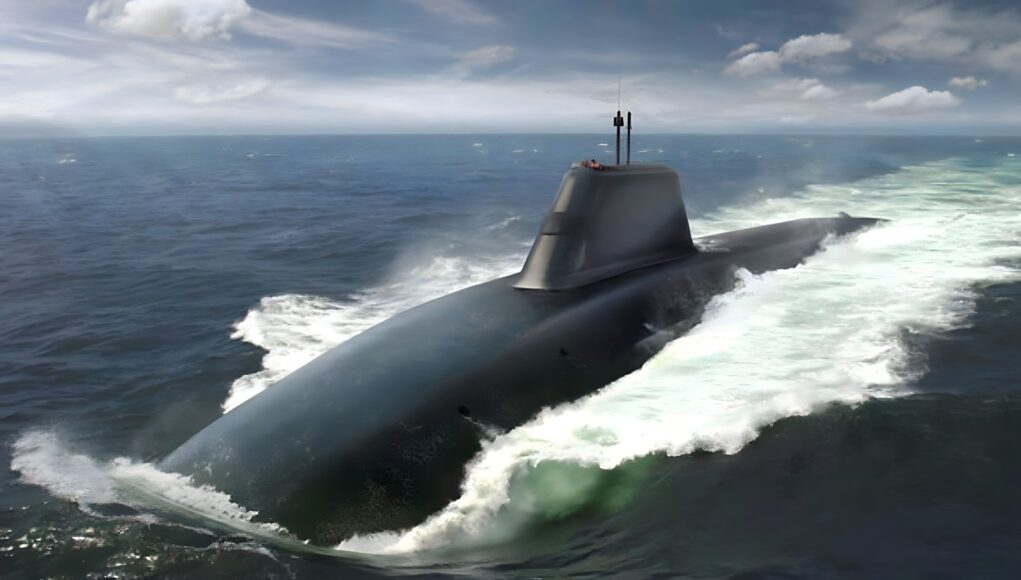
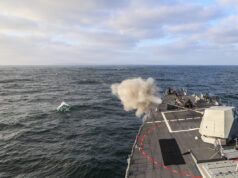
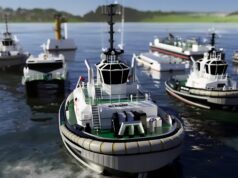
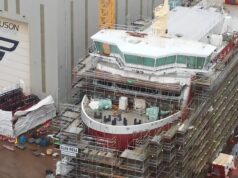
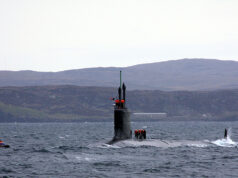
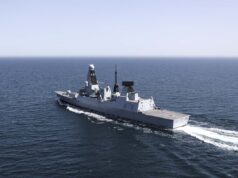

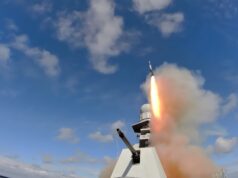
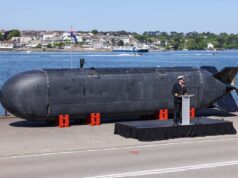
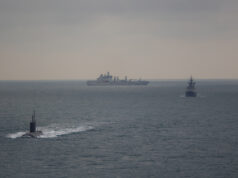
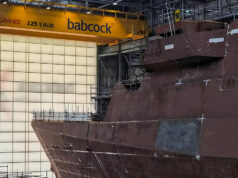

“Accepting all recomendations”
That’s the bit we are all interested in, mainly what they will be doing next.
“Money on the table”, let’s get to it.
Build the next with more missile tubes. The world situation may be even worse than at present requiring a stronger deterrent against multiple threats If things cool down and some can be unused then bonus, but FFS don’t base the planning on all being peace and love, plan for the worst.
Oh, and look at a sustainable deterrent that does not rely on the US!
Which is more viable, relying on the US or the French?
Right now the US make even the French seem more reliable. Or buy a pool of missiles outright and carry out our own maintenance.
If they use the tubes we’re all dead anyway so I don’t much care if it’s 12 or 16
That’s the whole point though! Carry enough to be a deterrent against needing to use them. A small number may not achieve deterrence if faced with multiple threats. Some nut case may feel enough of their country may survive to make the cost of wiping us out worthwhile.
120 warheads is plenty enough for me, and the UK alone isn’t deterring any nuclear armed state
Got that mixed up. We carry 40 in peace time in 8 missiles but tridents can carry 12 each in 12 missiles
Build 5 SSBNs. So we don’t ever end up in the situation like we have now of near 6mth patrols. Plus in time of war it might allow 3 SSBNs to be at sea to up hold the nuclear option.
At this far-out, I imagine it’s looking at what new technologies will be be required, and mature, by then, such as quantum inertial navigation systems (Q-INS), reduction in magnetic image through the use of new materials into replace steel, etc, etc.
Will subs be a survivable asset then?
Rapid advances in technology are making hiding places far less hidden
Good question – a certain POTUS had recently questioned the viability of the AUKUS Project due to likely advances in Sensor/Submarine Detection Tech,but so far it seems to have made it past his scrutiny.
Short term i would imagine that aukis and dreadnought are safe, looking ti their replacements i would begin to wonder.
I would alai hope that by then we are begining to move beyond them being needed. Naive, but i can hope and dream.
What would you replace it with? The submarine is still by far the most survivable manned asset around.
Wow just for once I am genuinely pleasantly surprised MOD are actually thinking ahead 🤔 ! What this announcement does is give us some indication that MOD have learnt from the Vanguard / Astute fiasco and the massive cost of reinventing the DNE after not ordering any boats for 8 years post Vanguard.
The key bit is “aligning these studies with allied strategic planning” our allies are at present the US and Australia.
At present our last Astute & the 4 Dreadnoughts are in build, and then it looks like we will build 8 – 12(🤞🏻) SSN(A) for RN and significant parts for 5(8) SSN(A) for RAN. That’s the “Alied” bit as that determines the overall workload and timelines, the latter is critical to delivering the next SSBN class.
As for the numbers of SSN(A) boats we get, the RAN build and how long our Industry is tied up with that is at present a bit of knicker elastic. It’s all a bit up in the air whilst everyone awaits the 2 Big Political announcements that gives industry some certainty of what it’s actually going to be asked to deliver and long it’s going to take.
Decision number one will be the outcome of the US review of its AUKUS commitment re the RAN getting 3 Virginias SSN’s. That’s the real “turn the table over” IMHO game changer as it drives the RAN ask.
Decision number two is the UKs long awaited DIP (due this Autumn 🤞🏻) and then a revised Ship building strategy.
The permutations are endless but may be something like this :-
Trump says yes to 3 Virginias for RAN. RAN orders major parts for 5 SSN(A) which are to be assembled in Australia. UK orders 8 / 10 / 12 SSN(A) for RN.
Trump says no to any Virginias for RAN. RAN is in the 💩 and asks U.K to build 3 SSN(A) for RAN plus the parts for the other 5 home builds. U.K may then affect the number the RN can actually order down to 8(10).
Now everyone may be very upset about that final number but it’s more than we have now and let’s be honest about this the SDR mentions 12 but when was the last time any early numbers were actually delivered.
Polaris 4(5), T45 6(12/8), Astute 7(6/8/12), T26 8(13) , the latter has however been a bit different as God knows how we would have built 13 and 5 for Norway plus all the bits for 21 siblings.🤔
Personally my bet has always been we order 10 with options for 2 more (just in case).
Given the timeframe of the SSBN’s if Australia doesn’t get the Virginia’s, is it possible for the UK to accelerate SSN(A)?
Depends what you mean by accelerate, if it’s bring forwards the start of the programme that’s governed by the completion of the existing builds and that has been painfully slow due to the pace dictated by Treasury payments schedule.
The investments in the supply chain including here in Derby will really help as a lot of the infrastructure wasn’t fit for purpose, but that’s for the will help speed up long lead items.
There is another poster on here (DB I think) who may know more about the Barrow investment and how their uplift is going.
Put another way, if it does happen and ends up with a need for 11 – 15 plus large sections for 5 more Ausie builds it will be “Hammer Time”.
Wow just for once I am genuinely pleasantly surprised MOD are actually thinking ahead 🤔 ! What this announcement does is give us some indication that MOD have learnt from the Vanguard / Astute fiasco and the massive cost of reinventing the DNE after not ordering any boats for 8 years post Vanguard.
The key bit is “aligning these studies with allied strategic planning” our allies are at present the US and Australia.
At present our last Astute & the 4 Dreadnoughts are in build, and then it looks like we will build 8 – 12(🤞🏻) SSN(A) for RN and significant parts for 5(8) SSN(A) for RAN. That’s the “Alied” bit as that determines the overall workload and timelines, the latter is critical to delivering the next SSBN class.
As for the numbers of SSN(A) boats we get, the RAN build and how long our Industry is tied up with that is at present a bit of knicker elastic. It’s all a bit up in the air whilst everyone awaits the 2 Big Political announcements that gives industry some certainty of what it’s actually going to be asked to deliver and long it’s going to take.
Decision number one will be the outcome of the US review of its AUKUS commitment re the RAN getting 3 Virginias SSN’s. That’s the real “turn the table over” IMHO game changer as it drives the RAN ask.
Decision number two is the UKs long awaited DIP (due this Autumn 🤞🏻) when we actually budget some money for the SSN(A) order and then issue a revised Ship building strategy.
The permutations are endless but may be something like this :-
Trump says yes to 3 Virginias for RAN. RAN orders major parts for 5 SSN(A) which are to be assembled in Australia. UK orders 8 / 10 / 12 SSN(A) for RN.
Trump says no to any Virginias for RAN. RAN is in the 💩 and asks U.K to build 3 SSN(A) for them plus the parts for the other 5 home builds. U.K may then affect the number the RN can actually order down to 8(10).
Now everyone may be very upset about that final number but it’s more than we have now and let’s be honest about this the SDR mentions 12 but when was the last time any early numbers were actually delivered.
Polaris 4(5), T45 6(12/8), Astute 7(6/8/12), T26 8(13) , the latter has however been a bit different as God knows how we would have built 13 and 5 for Norway plus all the bits for 21 siblings.🤔
Personally my bet has always been we order 10 with options for 2 more (just in case).
As a layman in these matters , can someone explain why 1 class of submarine can’t fulfil both roles , IE nuclear deterrent and attack submarine , it surely would make more economic sense to have one design adapted for the role is to be used for , cheaper to build and design and the problems only need ironing out in the first in class boat .
Horses for Courses spring to mind,to carry say 12 – 16 Trident Missiles in a Boat with an average endurance of 90 days + you need a Submarine of some size,the Crew need to have a good degree of comfort ( ie room ) and enough Supplies need to be carried accordingly.An Attack Submarine has to be able to transverse the Oceans at some speed to get to its Operational Areas,so it will be designed more for performance than endurance,it will usually deploy for shorter periods,it’s principal Weapons take up less space than say a Trident Missile.To combine the two into a single design would not be the best solution i think.Saying that the Dreadnoughts will be substantially bigger than the Vanguards,which were substantially bigger than the Resolutions,much in the same way that SSN AUKUS will be bigger than Astute,which was bigger than Trafalgar.
Depends what you mean by accelerate, if it’s bring forwards the start of the programme that’s governed by the completion of the existing builds and that has been painfully slow due to the pace dictated by Treasury payments schedule.
The investments in the supply chain including here in Derby will really help as a lot of the infrastructure wasn’t fit for purpose, but that’s for the will help speed up long lead items.
There is another poster on here (DB I think) who may know more about the Barrow investment and how their uplift is going.
Put another way, if it does happen and ends up with a need for 11 – 15 plus large sections for 5 more Ausie builds it will be “Hammer Time”.
As it’s 2.5 times the cost for an SSBN compared to an SSN it means not many boats. The UK actually saves a lot of money by leveraging tech from one to the other, which is why we build a class of SSBN with a new design Reactor and latest tech and then follow up with an SSN class using as much as possible of the SSBN. And then we repeat the process !
Vanguard and Astute PWR2
Dreadnought and SSN(A) PWR3
These two roles are different and very demanding so a multi role boat is not feasible. It would be not good enough at either role. Further the CASD role would be compromised because the nuclear deterrent must remain hidden which it no longer will be after firing TLAM Tomahawk salvoes at land targets. Infra red satellites see that TLAM launch.
Much better to keep them separate, great at what they do and share as many components that don’t cause compromised functions for the cost savings.
I wasn’t suggesting a multi role boat , rather one design to be able to do both functions , IE 1 set of boats for the attack role and another dedicated set for the nuclear deterrent role but both built to the same specs with modifications for the role they are to be used for
Thanks for your clarification. Since the requirements for the distinct roles are different the common part is best expressed at the component level such as the nuclear power reactor and support systems which are better value in common.
Vertical launch cells for ICBM (CASD) or horizontal torpedo tubes (Attack) are so distinct that there’s nothing in common.
Since design is digital there is value in a platform of tools that are common to both designs and the designers who use them. Because national security is at risk, such digital tools not only must be fit for purpose in many domains; mechanical, electrical, electronic, nuclear but every tool must have security data and controls. That’s a huge investment and enabler of excellence.
In addition the sites and facilities for design, build and test are also a large investment that is repaid not just on many boats in one class, but many classes too.
I’m sure that as the most expensive public project in the Defence budget, it won’t just be necessary to deliver taxpayer value for money, but there will be management effort to be open and transparent about actual savings. Typically a programme management office effort with lots of reporting to the programme board of stakeholders..
Have previously heard they were considering a complementary deterrent, either an air launched cruise missile or mobile land based erectors. This is far in the future though, they are just doing blue sky thinking at this point not serious planning.
Thanks for your clarification. Since the requirements for the distinct roles are different the common part is best expressed at the component level such as the nuclear power reactor and support systems which are better value in common.
Vertical launch cells for ICBM (CASD) or horizontal torpedo tubes (Attack) are so distinct that there’s nothing in common.
Since design is digital there is value in a platform of tools that are common to both designs and the designers who use them. Because national security is at risk, such digital tools not only must be fit for purpose in many domains; mechanical, electrical, electronic, nuclear but every tool must have security data and controls. That’s a huge investment and enabler of excellence.
In addition the sites and facilities for design, build and test are also a large investment that is repaid not just on many boats in one class, but many classes too.
I’m sure that as the most expensive public project in the Defence budget, it won’t just be necessary to deliver taxpayer value for money, but there will be management effort to be open and transparent about actual savings. Typically a programme management office effort with lots of reporting to the programme board of stakeholders..
George, no delete function makes it impossible to delete duplicates like this..